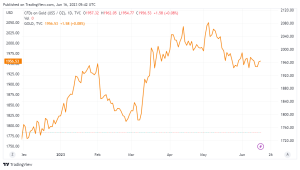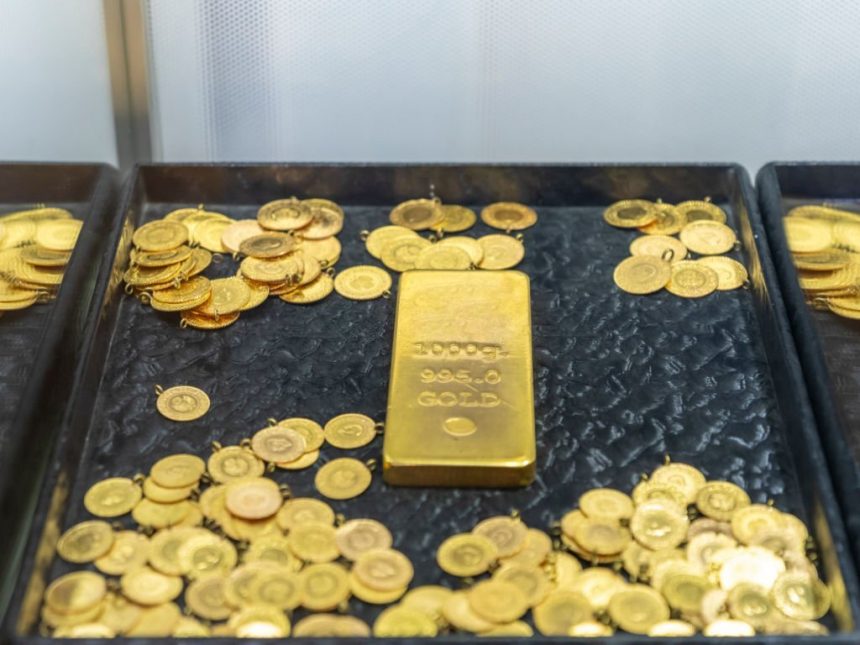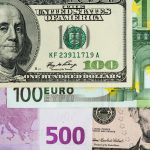As the fallout from the US Federal Reserve (Fed) and the European Central Bank (ECB) policy announcements has subsided. The gold price is consolidating the earlier turnaround near $1,960 early on Friday.
The decline in the US dollar gives the price of gold a boost.
On Thursday, the gold price displayed strong two-way movement, falling to $1,925. Its lowest level since March 17, before putting on a stunning comeback to test the $1,960 mark. the decline in the price of gold during the first half of the day was fueled by the US dollar’s sustained rise. Which was brought on by the Federal Reserve’s hawkish pause. The pain in the non-interest-bearing gold price was further aggravated by the hawkish 25 basis point (bps) rate hike by the European Central Bank (ECB).
On Wednesday, the Federal Reserve kept the federal funds rate at 5.0% to 5.25%. Ending its cycle of rate increases for the first time since early 2022. However, the so-called Dot Plot chart in the Fed’s Statement of Economic Projections painted a hawkish picture. With two additional rate hikes of 25 basis points on the horizon. Meanwhile, the ECB increased its inflation forecasts by 25 basis points. While still meeting market expectations. The core rate is now anticipated to average 5.4% in 2023, 3% in 2024. And 2.2% in 2025. The President Christine Lagarde’s support for more tightening in the future and her denial of any anticipation of a rate halt were seen. As being hawkish in combination with the upward revisions to the inflation estimates.
US Treasury bond yields and the US dollar both decline as a result of poor US data and post-Fed profit-taking.
The United States Jobless Claims and Retail Sales statistics came in mixed. Raising doubts about the prognosis for the US economy. However, the tide shifted in favor of the gold price. The US dollar suffered a strong sell-off. As a result of the decline in Treasury bond yields. But the price of gold increased. Initial weekly claims for unemployment insurance held steady at 262,000 in the reporting period compared to forecasts of 249K. While US retail sales unexpectedly increased in May, coming in at 0.3% vs. the projected -0.1%. The unanticipated 0.2% decline in the US was the cause. Industrial production contributed to the worsening situation for the dollar. The unwinding of post-Fed USD longs also contributed to the decline in the value of the US dollar.
Markets are currently anticipating the Bank of Japan’s (BoJ) policy decision this Friday, however it is unlikely to have any major implications because the central bank is likely to keep things the same at its meeting in June. Preliminary University of Michigan (UoM) Consumer Sentiment and Inflation Expectations data and the return of Federal Reserve policymakers to the podium later in the day will be watched for new trade clues on the price of gold. In addition, the end-of-week flows may be important as the week comes to a close and more central banks make important policy choices.
Gold Technical analysis
On Thursday, the price of gold did decline towards its bottom from March 17 of $1,918 but buyers stepped in to help, resulting in a daily close that was slightly above the bearish 21-Daily Moving Average (DMA) at $1,958 for the first time since May 15.
However, the price of gold is currently having trouble gaining upward momentum. For a serious rebound towards the $2,000 barrier to start, there must be a weekly closing above the 21 DMA barrier.
Prior to that, the $1,971 weekly high and $1,984 June highs could put the bearish pledges to the test.

The 21 DMA support must be broken for the price of gold to resume falling towards the pivotal horizontal 100 DMA at $1,942.Round $1,930 is where the next support levels are seen.









